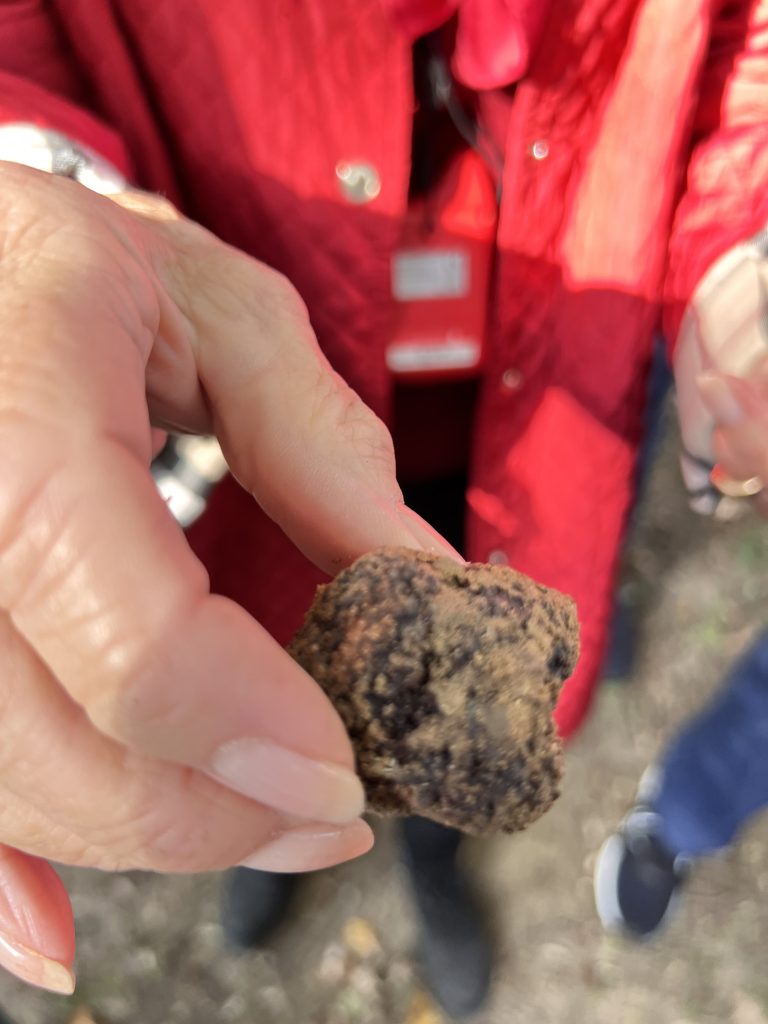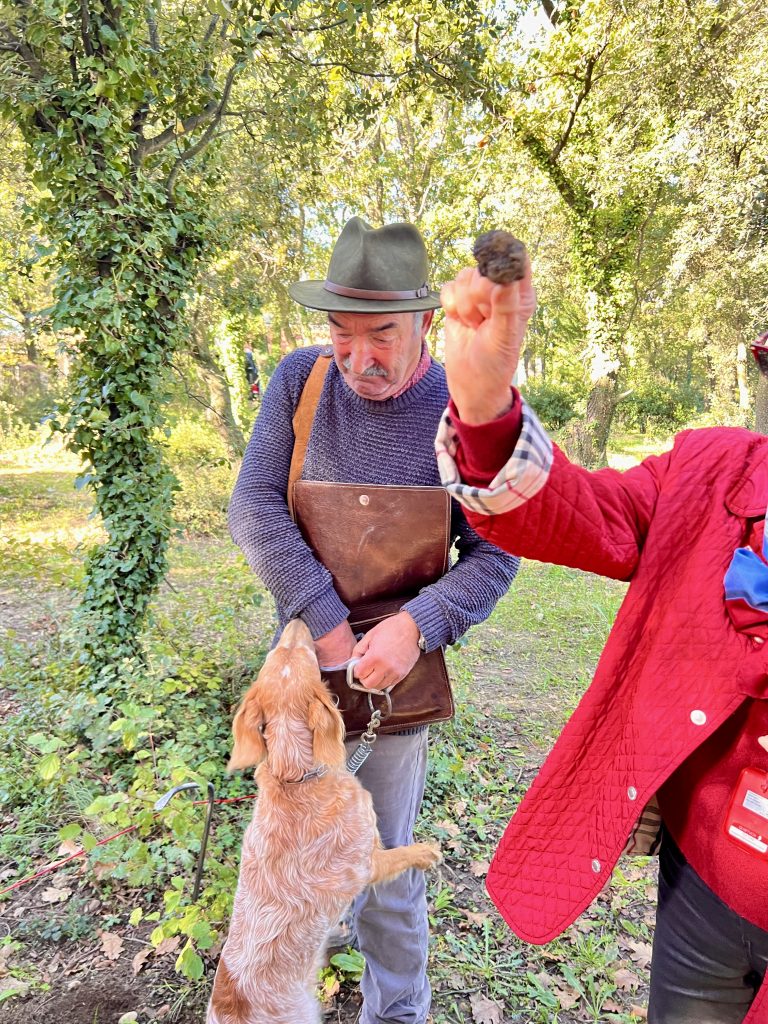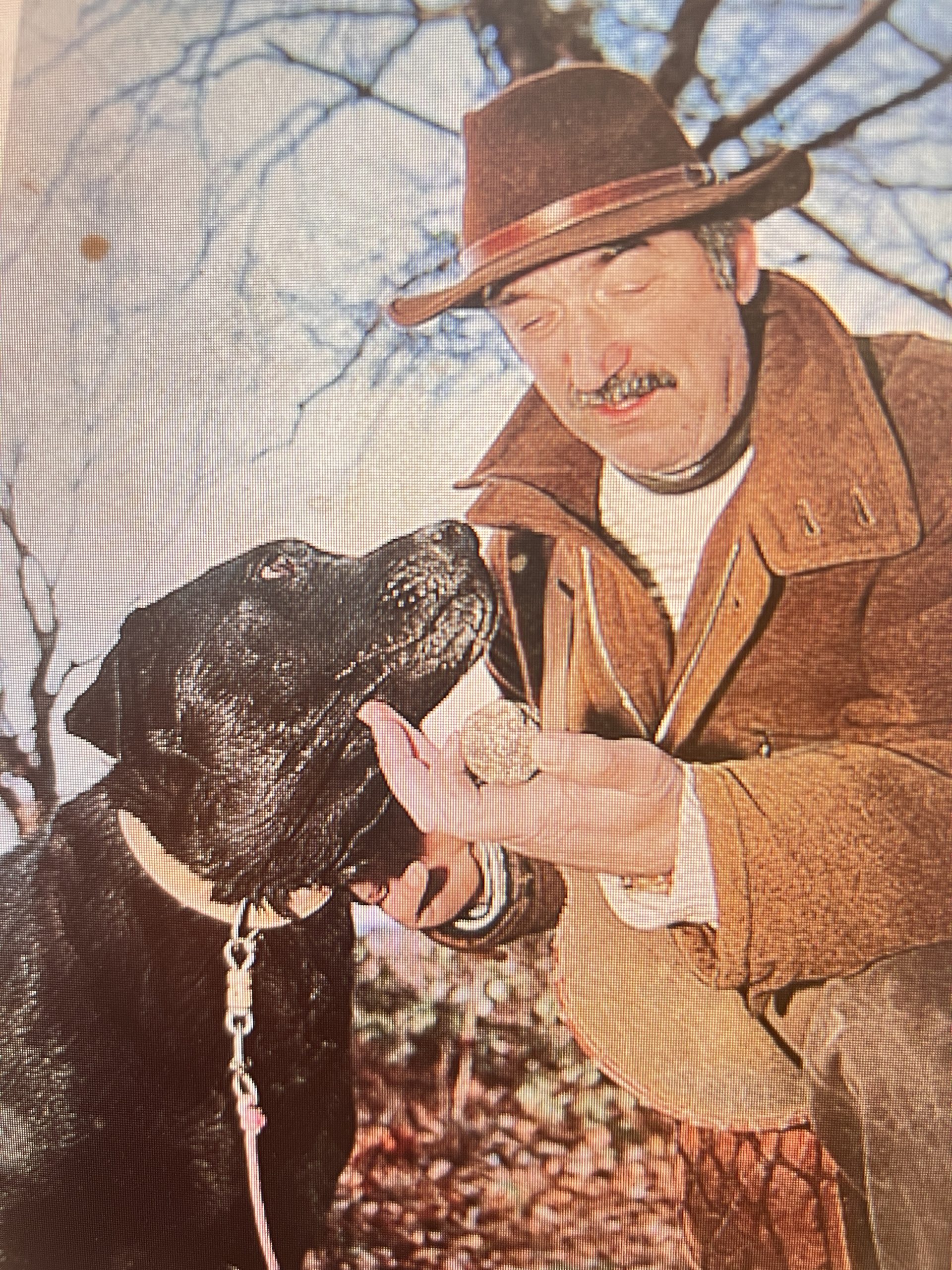In the rolling hills of Provence, a timeless tradition unfolds each winter: the hunt for truffles. Truffles, the elusive and highly prized fungi of the culinary world, have long been associated with mystery, luxury, and indulgence. But in Provence, France, they are also a deep-rooted part of the culture.

These prized fungi often dubbed the “diamonds of the kitchen,” grow hidden beneath the earth. But harvesting them is no simple task. Truffle hunters have relied on specially trained dogs to locate these elusive treasures for centuries. They are so elusive that neither man nor machine can locate them on their own and must rely on canines’ keen sense of smell to find the fungus.
To truly understand the magic of truffle hunting in Southern France, one must experience it firsthand, wander through sun-dappled oak groves, and watch the dogs sniff the soil.

One cool fall morning, my husband and I traveled along dirt roads, past lavender fields to a remote truffle farm, located in the Vaucluse department in the Provence-Alpes-Côte d’Azur region. The experience was a rare glimpse into another way of life and a fascinating Amawaterways river cruise excursion.
Frances, our guide and translator, exclaimed, “Visiting a truffle farm provides a unique glimpse into ‘La France Profonde’ — a way of life in rural France, rich in tradition and steeped in French customs.”
Christian, a fifth-generation truffle hunter met us at his family property. We sat on wooden benches outside his barn in the forest, where he introduced us to Olly, his well-trained dog. Olly is a mixture of springer spaniel and setter. “He is the love of my life,” he boasted. When asked about planting oak trees for truffle production, he quoted advice from his grandfather, “plant, go home, and pray for 15 years”. “We respect the soil, the trees, and others in the truffle guild. I go about it the way my great-grandfather did. My 8-year-old grandson goes out alone with Olly. He will be a great truffle hunter, and best of all; he knows how to keep quiet and not share our secrets, “he added.
Before we followed him deeper into the woods with his dog, he explained the symbiotic relationship between the fungus and the tree roots of his oak trees. Truffle farmers are very secretive about their methods -passed down through generations- of pampering the soil of their trees and the ways they train their dogs. We urged Christian to share his dog-training secrets with us. He admitted that after the puppy was born, he coated the mother’s stomach and teats with truffle oil and eventually coated a toy for the dog to fetch in return for a doggie treat. “But not all my dogs can learn this skill. Truffles are so elusive that neither man nor machine can locate them on their own. We rely on our dogs’ keen sense of smell to find the fungus, which grows underground,” he added.

In previous times, pigs were used to search for the tricky truffles, but they tended to be hard to manage, and they dug them up and devoured them, sometimes damaging the delicate truffle beds and impacting future harvests.
The truffle hunt is quiet, meditative, and deeply connected to the land. Christian spoke of a near-mystical bond with his dogs and explained how trust and intuition guide the hunt. We followed them as they zig-sagged through the oak forest. When Olly smelled the truffle’s aroma, he began digging it up. Christian hurried to scoop it up, gently placed it in his leather pouch, and then rewarded his buddy with a thick chunk of bacon.
After the hunt, we visited Chistian’s barn, where he and his wife, Giselle served us a glass of their wine, made from the vines on their property, as well as homemade samples of their olive oil, honey, and pâté, flavored with their truffles. “In this region, 60-70% of our truffles are black winter truffles that we sell to all the Michelin-starred chefs.
During black truffle season, they are carefully transported to nearby markets, such as Richerenches, where their value is determined by quality, size, and scent. Ten to twelve tons of truffles are sold here every year. France, the world champion of truffles, produces almost 30% of world production.
Known as the “black diamond,” this famous truffle has always been clouded in mystery, especially regarding its life cycle. After a fast growth at the end of the 19th century, truffle cultivation dropped by the 1970s. The cause was the two World Wars, as well as intensive farming. Truffles are so expensive today because they have not reached the previous production rate. Climate change could also be one of the explanations.
Depending on the species of truffle and the volume of production, the price varies from year to year. In the largest truffle markets in France, the price is fixed. To give you an idea, in specialized markets in the Southwest you can generally find black truffles around $884 per kilo (a little over two pounds). In specialized stores in major cities, it will cost you about $1,320 per kilo. The truffle is very sensitive to heat: cooking it makes the mushroom lose its incredible aroma. Add it at the last minute to your dish, for example, grated.
If you’d rather not drive but still want to explore Provence and Beaujolais and perhaps visit a truffle farm – from November to March – there are plenty of organized tours to choose from. My husband and I opted for a seven-night Rhone River cruise with Amawaterways, allowing us to unpack once, cruise the river by night, and tour the sights during the day. The Rhone River meanders through a spectacular pocket of Southern France, carved with gorges and vineyards and dotted with medieval cities and villages. On our cruise, we also visited Arles, Avignon, Viviers, Tournon, Vienne and Lyon. One of the highlights was truffle hunting with a local truffle farmer in his oak forests – a truly unforgettable experience.
